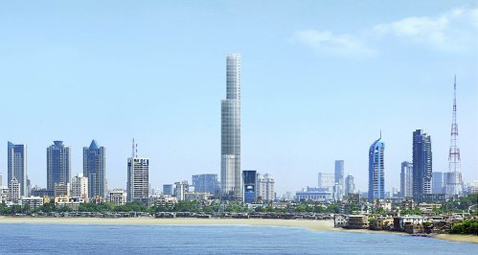
Rapid urbanisation is leading to significant increase in the number of high-rise buildings in the country. According to a recently released joint study by industry body ASSOCHAM and end-to-end property solutions provider DTZ, Mumbai has the maximum number of buildings with 16-25 floors and upwards.
The study titled ‘Sky is the limit: High Rise Building – Safety, Security & Disaster Management’, pointed out that the average number of floors in commercial high-rise buildings located in Delhi-NCR, Mumbai and Bengaluru was between 6 to 15 floors. It added that Mumbai had higher number of buildings falling in the segments of 16 to 25 floors and 26 to 35 floors as compared to Delhi-NCR and Bengaluru.
Rapid urbanisation had led to an increase in high-rise buildings, both commercial as well as residential, the study said, further revealing that the residential segment constituted three-fourth of the total high-rise stock in the three major cities — Delhi-NCR, Mumbai and Bengaluru.
Following the recent earthquake in Nepal and parts of eastern India, security and safety concerns have been raised with regard to the mushrooming growth of high-rise buildings.
Safety standards
The Bureau of Indian Standards has formulated a series of standards on earthquake resistant design and construction of buildings, including repair, retrofitting and seismic strengthening of existing buildings. The National Building Code of India, in particular, provides comprehensive provisions for earthquake safe design and construction of buildings. It has a seismic zoning map which divides the country into four zones — Zone II, Zone III, Zone IV and Zone V. Among the four zones, Zone II is considered the least vulnerable to earthquakes and Zone V the most vulnerable. Depending upon severity of the earthquake that may be experienced in a concerned zone, the NBC has laid down design provisions that should be followed by structural engineers at the time of design and construction of buildings. A detailed mechanism for implementing the technical provisions through building regulatory processes is also given in the NBC.
Among the three metro cities with the highest concentration of high rise buildings, Delhi-NCR falls under the High Damage Risk Zone. The other two cities, Mumbai and Bengaluru, fall under the Moderate Damage Risk Zone and Low Damage Risk Zone respectively.
“Mumbai has the maximum stock of high-rise commercial buildings due to the severe space crunch in the city. The city has no option but to grow vertically to accommodate future urbanisation because of lack of open space,” the study said, adding that the residential high-rise buildings had displayed a growth trend similar to commercial high rises.
Highlighting the trend of scaling greater heights in the residential segment, the study said that Mumbai contributed 75 per cent of the total stock of residential buildings with 16 to 25 floors and 91 per cent of the total stock of residential buildings with 26 to 35 floors were located in Delhi-NCR, Mumbai and Bengaluru. It added that the average number of floors in residential high-rise buildings was 6 to 15 floors.
“Not only tier-I but tier II & III cities such as Bhubaneswar, Chandigarh, Lucknow, Gwalior, Jaipur, Nagpur, Meerut, Kochi, Indore, Patna, Gaya, Ranchi and Udaipur are also going vertical, especially in the residential space. A large number of IT/ITES companies are moving to Tier II & III cities in search of cheaper real estate and manpower. This will drive the demand for commercial as well as residential real estate. Most of the builders have launched high rise residential projects in these cities on the back of growing demand,” the study said.











